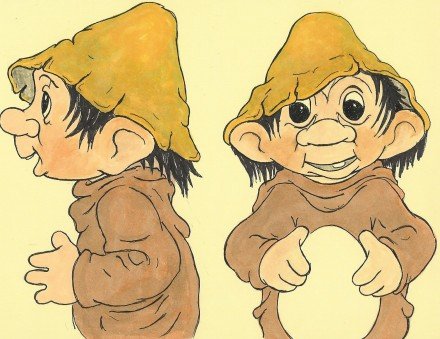Go Ahead - Feed The Trolls
Trolls are supernatural beings from Scandinavia. In Norse folklore, they were depicted as big, ugly, brutish, people-eaters who live in the forests and mountains. Historically, trolls were objects of scorn and fear who harassed and played tricks on people. But things changed in the late1950s when a Danish man named Thomas Dam carved a wooden troll doll for his children and started an international troll craze that would span several decades and enshrine a new breed of trolls as beloved good luck charms for millions of people around the world.
Troll dolls have exaggerated features and wild hair that make them — in the House’s humble opinion —impossibly cute. “They were so ugly that you couldn’t help but laugh,” Dam said, “and when you laugh, luck follows you." (Scandinavian folklore advises that nothing bad can happen to someone who is laughing.)
The original dolls were branded as “Good Luck Trolls and sold under the Dam Things trademark. Mass produced in the 1960s from molded rubber and vinyl, the dolls became a sensation bordering on mania. This was the golden age of troll dolls, and the popularity of the Dam trolls inspired numerous imitators. Uneeda Doll’s “Wish-niks,” for example, were marketed with the claim that rubbing the trolls’ bushy hair would bring good luck. There were also the “Lucky Schnooks,” who promised to bring good luck to someone who rubbed them every day. Some of the trolls even had bejeweled navels, and collectors were encouraged to rub the jewels while making a wish.
In the 1980s, trolls were re-introduced to the U.S. market as “Norfins” (Norway Orphans?) under an official license agreement with Dam Things. The sad-eyed Norfins came in a variety of sizes and wore thematic costumes such as clown, caveman, doctor and aerobics instructor. The Norfins’ association with good fortune was less overt, opting instead to lean into the “adoption/orphan” theme popularized by the Cabbage Patch Kids at the time.
Nevertheless, the appeal of trolls as good luck totems has endured until the present day. The 2020 Good Luck Troll catalog features fresh takes on the original Dam Things design, including a Limited Edition Good Luck troll in brushed brass with a heart of 14kt gold inside. Judging by the creative troll up-cyclers selling their wares online, trolls are still beloved icons of good fortune — Tiff’s Trolls, for example, combines traditional lucky trolls with new age elements, including mystical crystals, smudge sticks and lavender.
Further Reading: The Trolls Take Over
Learn about the Dalahäst from Sweden, a talisman of good fortune, strength, courage and happiness.
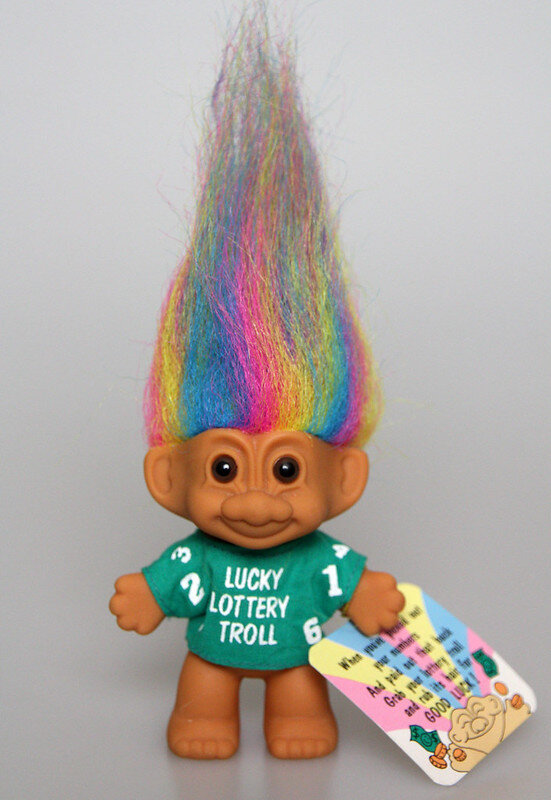
Lucky Lottery Troll with rainbow hair
Tiff's Trolls, Troll Doll with Colombian Amber Crystal "Hair"

Dam Things Troll c. 1980s, The House of Good Fortune Collection

Dam Things Troll c. 1980s, The House of Good Fortune Collection

Dam Things Troll, c. 1980s The House of Good Fortune Collection

Dam Things Troll, The House of Good Fortune Collection

Lucky Schnook
Trolls on the Trollway in Mt. Horeb, Wisconsin
Viking Troll by Dam, 1960s
2020 Limited Edition Good Luck Troll

Troll Doll c. 1960s, The House of Good Fortune Collection, as found, "Before" Hair Styling
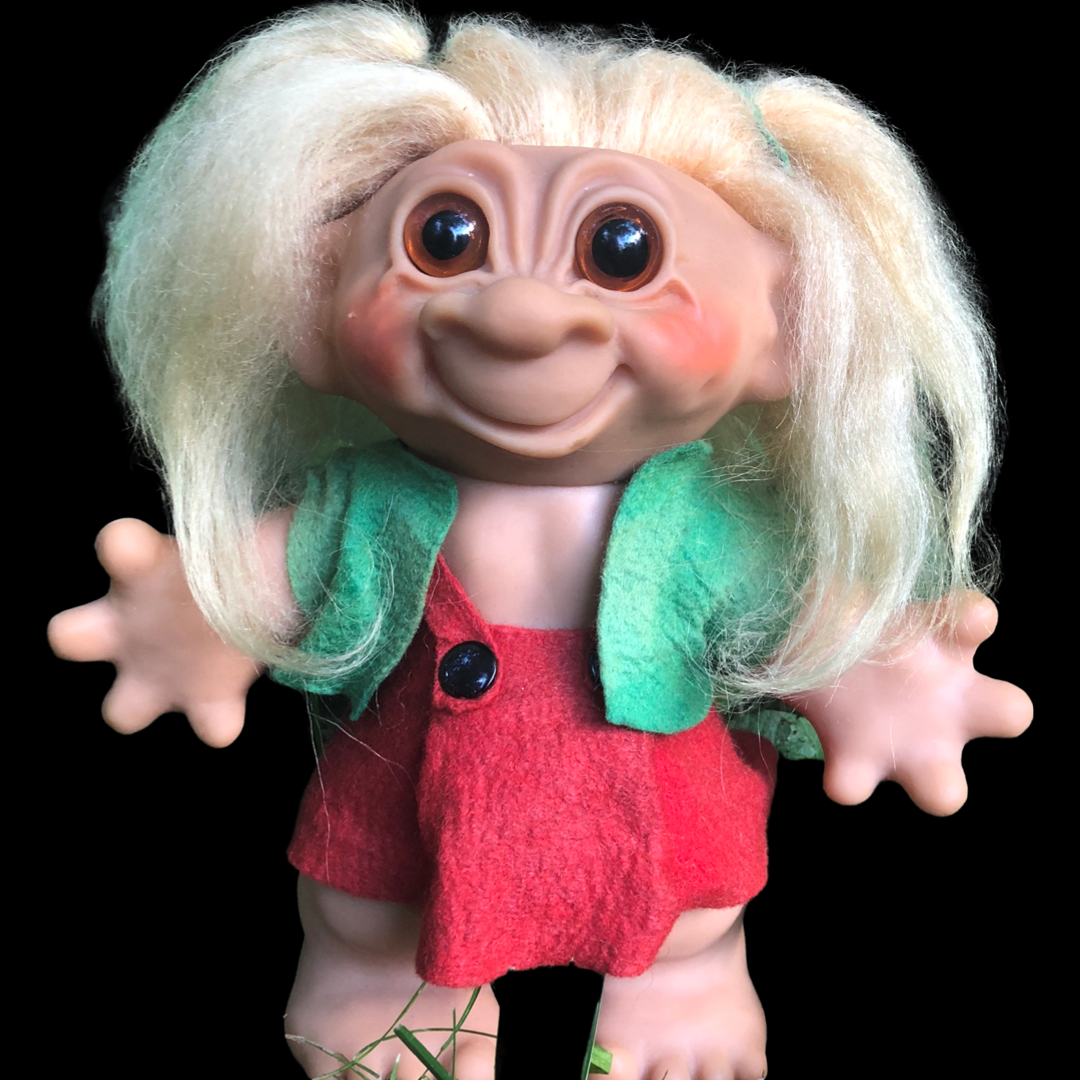
Troll Doll c. 1960s, The House of Good Fortune Collection, "After" Hair Styling
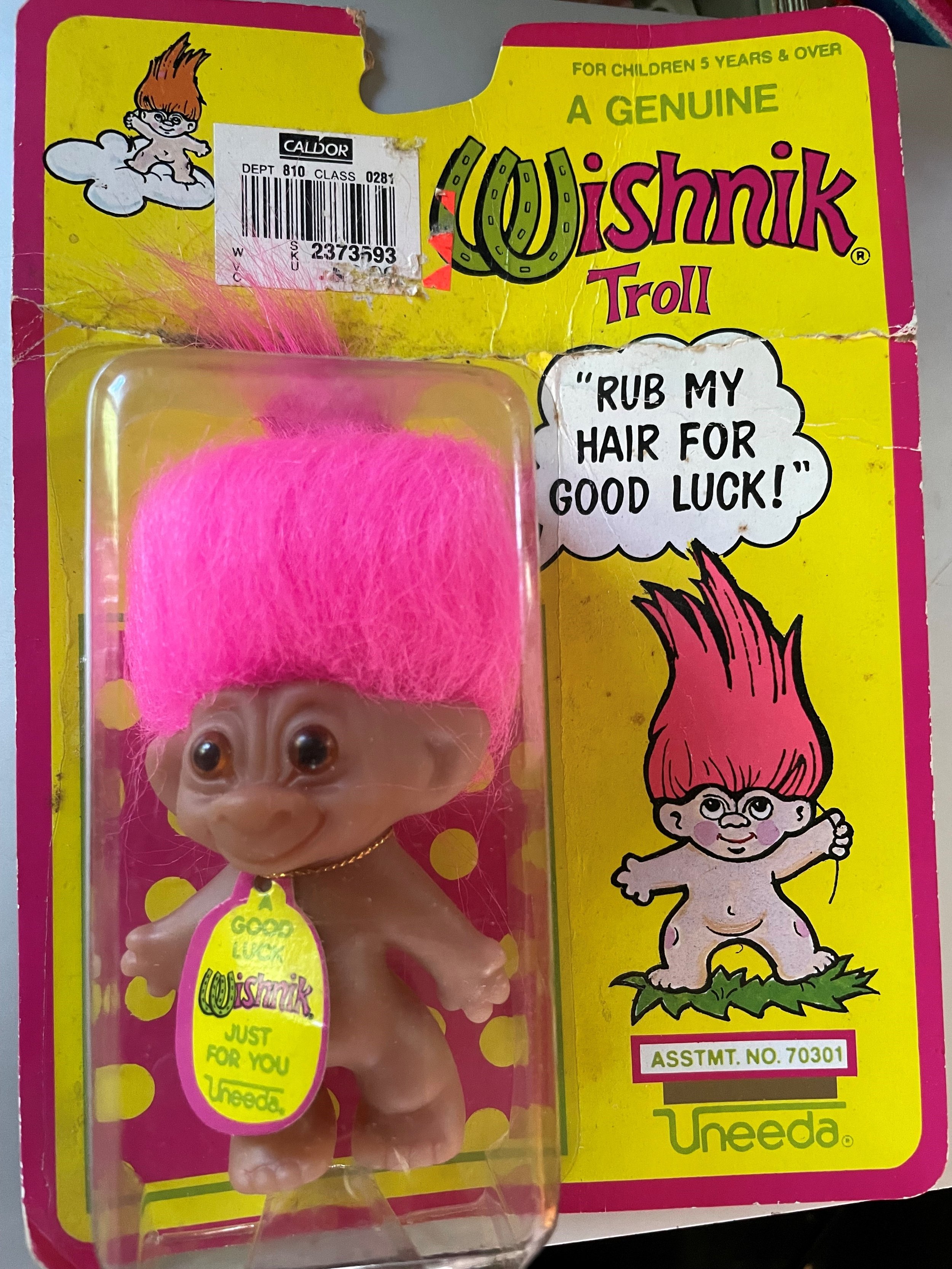
Wishnik Troll in original beat-up packaging from Caldor: "Rub my hair for good luck!", House of Good Fortune Collection
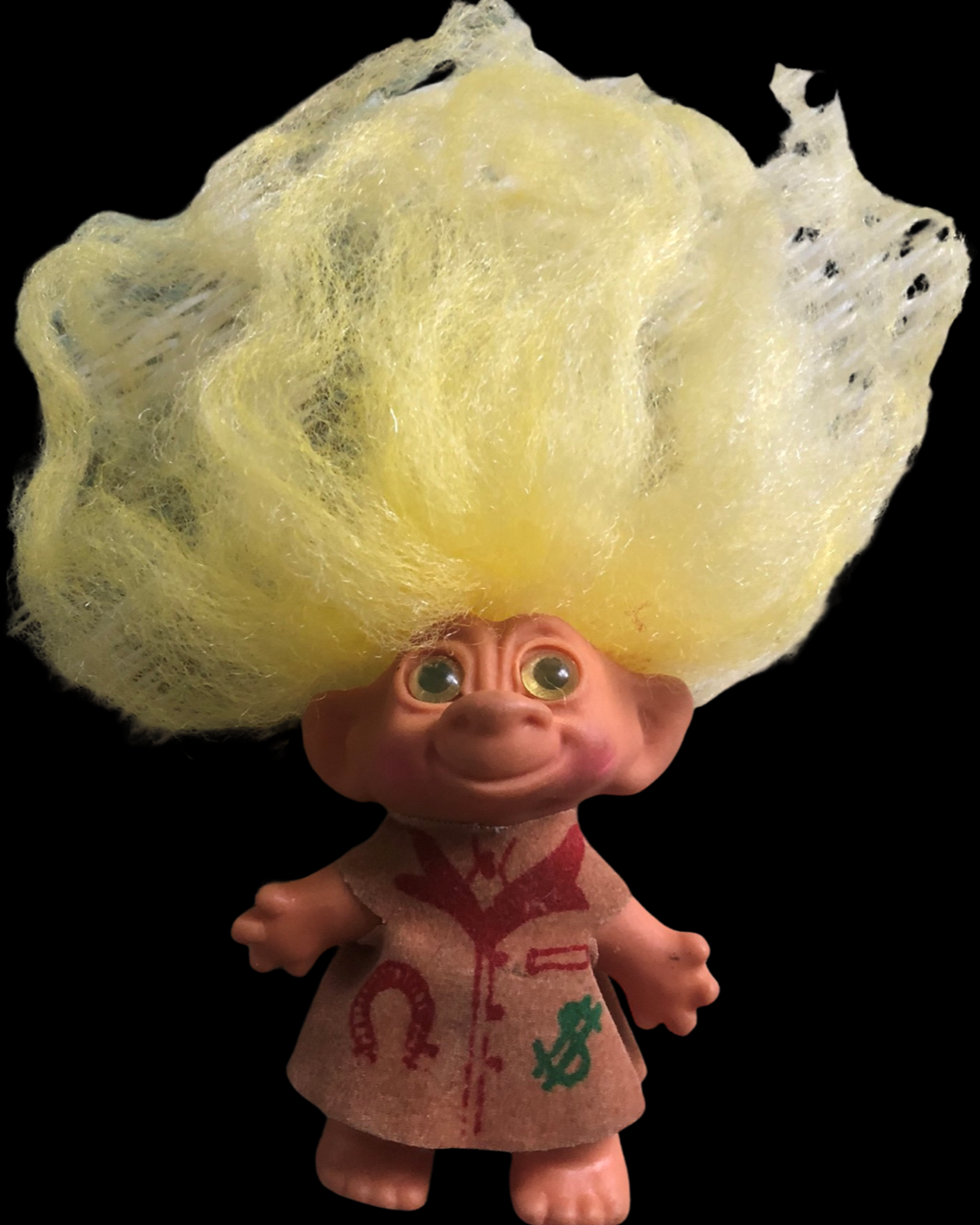
Wishnik Troll with amazingly poufy hair and a lucky horsehsoe on her dress, c. 1970s, House of Good Fortune Collection
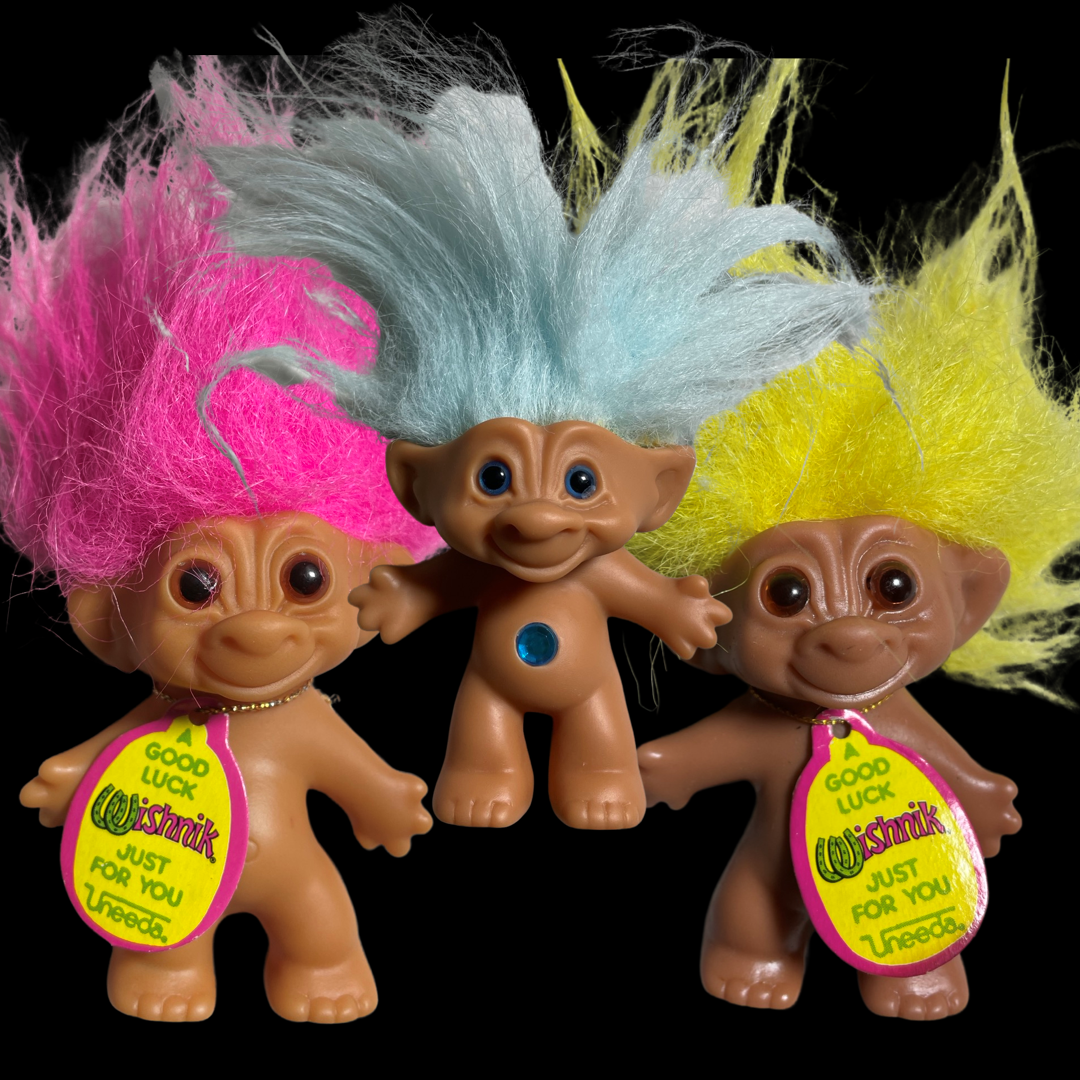
Two Wishnik Trolls with their original tags (note the double horseshoes), House of Good Fortune Collection.

Tiff's Troll with quartz crystal "hair" and lucky mushroom (gluckspilz)
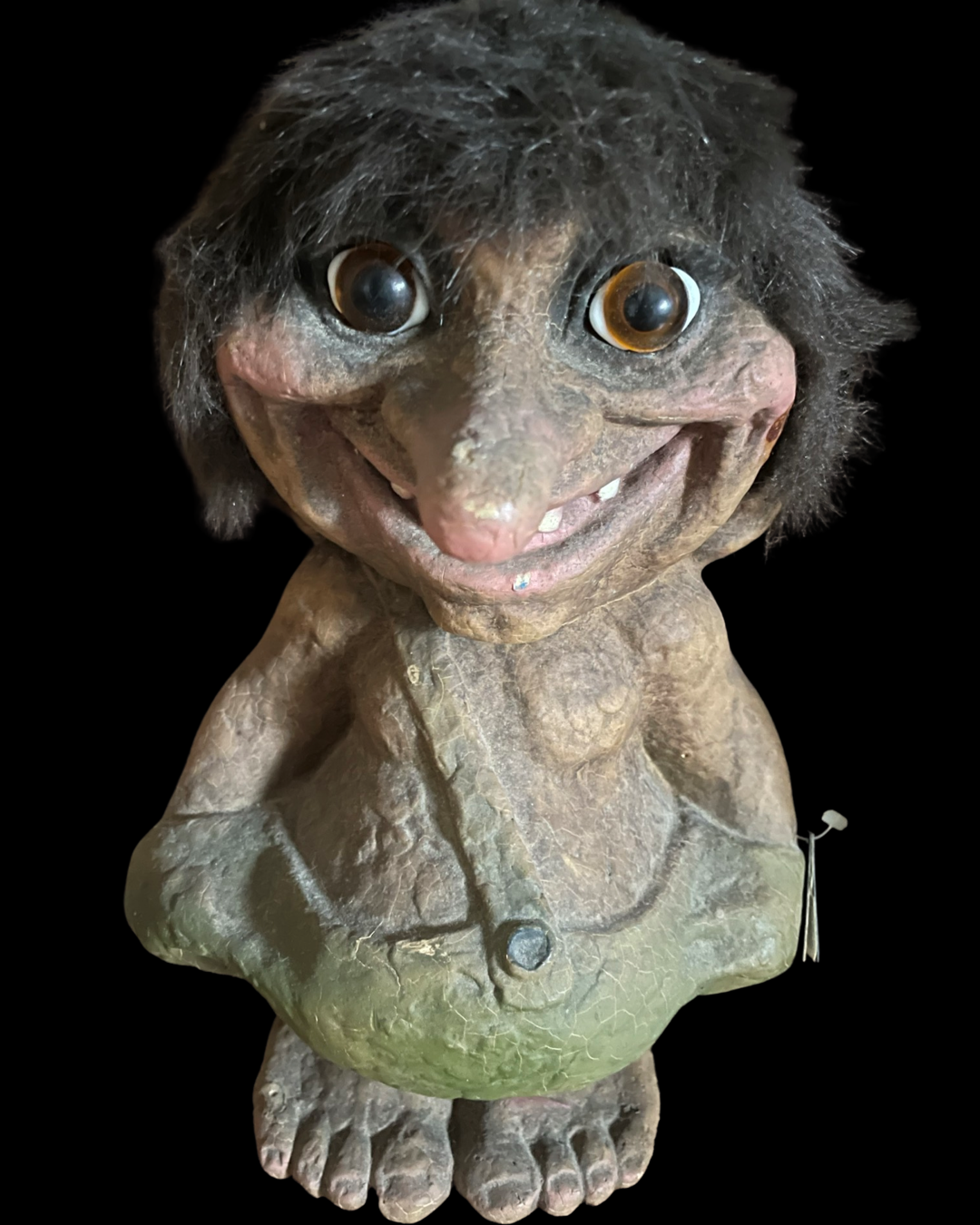
Ole, the original Ny-Form Troll from Norway, House of Good Fortune Collection

Ole, the original Ny-Form Troll from Norway, profile, House of Good Fortune Collection


